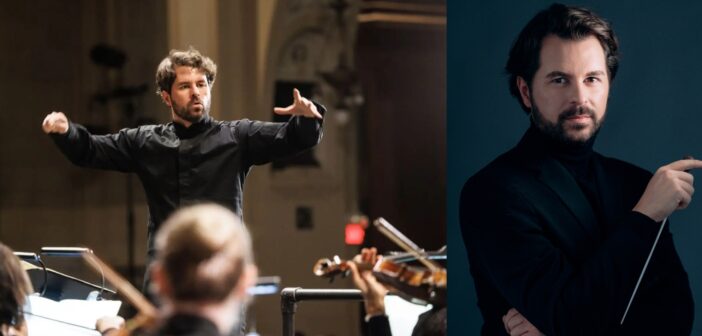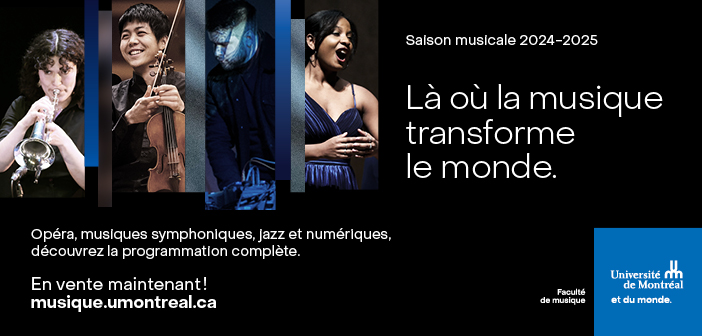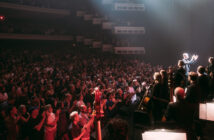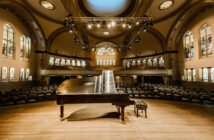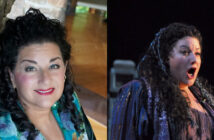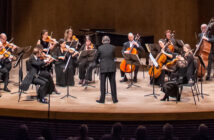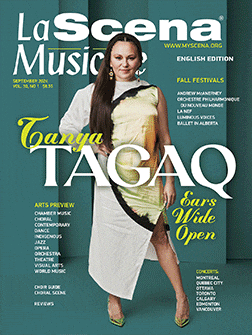Most orchestras play just a few consecutive shows, performing the same material over the course of two or three nights. The Orchestre de la Francophonie, led by Simon Rivard, however, tried – and succeeded – to cover all nine of Ludwig van Beethoven’s symphonies over five consecutive nights. An impressive feat for any orchestra, let alone a group made up of musicians aged 18-30. In their final concert of the 2023-2024 season at Montreal’s Maison Symphonique, they performed Beethoven’s 8th and 9th symphonies, as well as some new pieces by local talent.
What you missed
Before the Beethoven symphonies, the orchestra played Fragments, a piece by French-Canadian composer Charles Roy Dubuc. Fragments combines musical ideas and inspiration from other composers. Despite having never heard of Dubuc before, his music was impressive upon first listen. The pieces’ first movement was melodic, featuring the strings and clarinets; the second was a hazy and calming lullaby, highlighting clarinet and the double-reed woodwinds. Its calm suspense felt like an orchestra holding its breath, with no release. The third movement, a waltz, featured pleasant harmonies in the flute section, while the fourth and final movement was the most ‘cinematic’ of them all, with the clarinets and sustained strings at the forefront, and heavy use of percussion near the end. At just 25 years old, Dubuc has skillfully infused his music with different styles and moods — I look forward to hearing more from him, particularly with more varied orchestration.
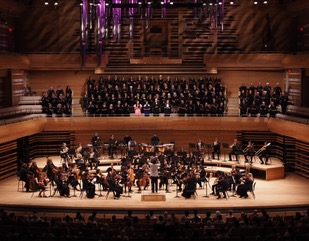
Then it was onto Beethoven’s Symphony No. 8 in F major, Op. 93, which Rivard described as “deceptively easy,” a piece that explores private, personal joy. It is the shortest of his nine symphonies. The first movement opens with a light, cheerful rhythm, with repetitive violins alternating higher and lower notes, and ends with a series of simple, repeated three-note melodies. Beethoven is said to have mimicked the sounds of the recently invented metronome in the second movement – the orchestra kept a steady rhythm of 16th notes throughout, with sudden sforzando attacks answered by quieter woodwinds.
In the third movement, the smaller size of this orchestra was more evident, as some crescendos lacked volume. However, the triumphant trumpets and horns burst forth, with the horns playing a beautiful duet against a pretty clarinet section. The last movement was simultaneously strong and lighthearted, as the orchestra repeated melodic material first heard in the strings. Throughout the piece, the physical expression and ferocity of Katherine Fortunato, the timpanist, was particularly thrilling.
Beethoven’s Symphony No. 9 in D minor, Op. 125, “Choral,” the fitting finale of the five-days of concerts, was a success. He famously composed this piece after he had become deaf, an ever impressive feat, and the movements reflect his own climb from despair to hope. The performance was a noble effort by the young musicians of the OF, however little stood out as compared to renditions by larger orchestras. The piece opens with a sustained horn, as other instruments slowly join the texture. The first three movements were enjoyable, though I suspect the fourth was the most anticipated of the entire performance.
Inspired by Friedrich Schiller’s poem Ode to Joy, the piece elicited the very feeling of brotherhood and hope reflected in the text. Among the soloists were Amelia Wawrzon (soprano), Isabella Cuminato (mezzo-soprano), and Sébastien Comtois (tenor), though it was Matt Mueller (basse) who impressed me most with the magnitude of his voice. The choir consisted of 100 volunteers, directed by Martin Boucher. Despite the unfortunate lack of context as to who these volunteers were or their singing experience, they performed admirably alongside the OF and the soloists. Their vocal blend led the audience to the work’s jubilant and grandiose conclusion, creating a palpable sense of camaraderie.
Gripes
It must be noted that in Beethoven’s 8th, various orchestral sections had somewhat muddled entrances: at times, entrances overlapped or phrases were ill-timed. Comtois and the choir were somewhat deafened by the percussion in the finale. The same can be said of the rest of the orchestra which, again, would have benefited from larger numbers.
Nevertheless, the OF put on an impressive show. Also impressive was the audience: not a single clap was heard between any of the four movements in all three pieces of the night. It ultimately became apparent that the crowd was saving their enthusiasm for the end, when the deserving musicians on stage were met with loud cheers and a standing ovation.

